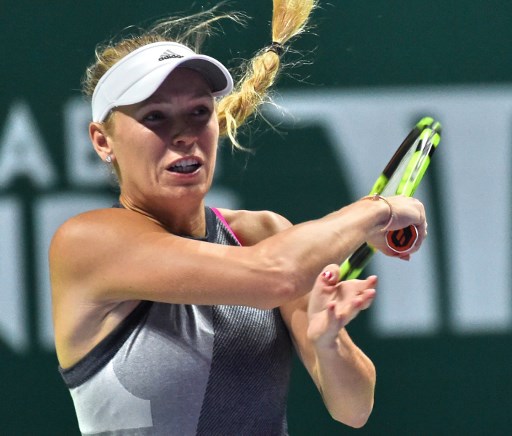
by Elizabeth Broomhall
ZHUHAI, China (AFP) — Women’s Tennis Association chief executive Steve Simon said he wants the WTA Finals to become the last event of the season from 2019, meaning a likely swap with the ongoing Elite Trophy in Zhuhai.
Simon said the Elite Trophy, which features 12 players ranked roughly from nine to 20, should precede the WTA Finals, the traditional season finale which has the women’s top eight and which finished on Sunday.
“Several years ago they were flipped,” Simon told reporters at the $2 million Elite Trophy in Zhuhai, southern China.
“It is something I would like to see changed going forward. It won’t happen in 2018 but for ’19 and beyond it would be my goal to see the WTA Finals as the last event of the year, no question.
“I think it’s something that we have to fix long term.”
Former world number one Caroline Wozniacki won the WTA Finals in Singapore on Sunday, but this week’s less prestigious Elite Trophy will now round off the arduous women’s season.
Simon said he had no plans to cut back on the busy end-of-year schedule, which is focused on Asia and is often hit by a spate of injuries and retirements as the long season takes its toll.
Simon admitted that the tour had a “crowded and mature calendar”, but he said scrapping Zhuhai, or any other Asian tournament, was not necessarily the answer.
“What sport do you play where at the end of the season players aren’t tired, they’re not held together by tape, ice and aspirin?” he quipped.
“Based upon the investments that have been made it’s very hard to tell somebody we don’t want you anymore… That can hurt you too.
“So you have to respect the investment that’s been made and see how you can get creative and make it work.”
‘Great facilities, no fans’
Zhuhai has built a new tennis centre with a 5,000-seat centre court, while Wuhan has a main stadium for 15,000 spectators, similar to Wimbledon. The Tianjin Open also has a purpose-built facility.
Simon said China had “a great desire” to develop in tennis, following Li Na’s breakthrough achievement in winning two Grand Slam singles tournaments before retiring in 2014.
“You’re seeing more courts being built… more grassroots programmes coming in, they’re taking it to the schools, they’re doing a lot of things that fully support the investment,” he said.
However, he acknowledged that more work was needed to attract crowds, particularly at a new event such as Zhuhai, which started in 2015.
“There’s a feeling and a perception, and it’s to some extent fair, that great events, great facilities, great hospitality, no fans. Where are they?” he said.
“It’s something we have to work on. But I think that the idea that because that’s a challenge, that you shouldn’t be here, is the wrong approach… Nothing’s easy.”
Simon said he was also hopeful that China would unearth a successor to Li Na, who was far and away the country’s most successful player so far. China currently has five women in the top 100, led by Peng Shuai at 27.
With more players coming into the sport and more opportunities, “the odds of another group coming through will be very good”, he said.
© Agence France-Presse







